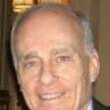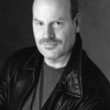Maniac : the Bath school disaster and the birth of the modern mass killer
(Book)
364.15234 SCHEC
1 available
Copies
| Location | Call Number | Status |
|---|---|---|
| Central - Adult Nonfiction | 364.15234 SCHEC | Available |
Description
Harold Schechter, Amazon Charts bestselling author of Hell’s Princess, unearths a nearly forgotten true crime of obsession and revenge, and one of the first—and worst—mass murders in American history.
In 1927, while the majority of the township of Bath, Michigan, was celebrating a new primary school—one of the most modern in the Midwest—Andrew P. Kehoe had other plans. The local farmer and school board treasurer was educated, respected, and an accommodating neighbor and friend. But behind his ordinary demeanor was a narcissistic sadist seething with rage, resentment, and paranoia. On May 18 he detonated a set of rigged explosives with the sole purpose of destroying the school and everyone in it. Thirty-eight children and six adults were murdered that morning, culminating in the deadliest school massacre in US history.
Maniac is Harold Schechter’s gripping, definitive, exhaustively researched chronicle of a town forced to comprehend unprecedented carnage and the triggering of a “human time bomb” whose act of apocalyptic violence would foreshadow the terrors of the current age.
More Details
Notes
Subjects
Bombings -- Michigan -- Bath (Township) -- History -- 20th century.
Kehoe, Andrew P. -- (Andrew Philip), -- 1872-1927.
Mass murder -- Michigan -- Bath (Township) -- History -- 20th century.
Students -- Crimes against -- Michigan -- Bath (Township) -- History -- 20th century.
Suicide bombers -- Michigan -- Bath (Township) -- History -- 20th century.
True crime stories.
Similar Titles From NoveList
Similar Authors From NoveList
Published Reviews
Booklist Review
Veteran true crime writer Schechter (Ripped from the Headlines! 2020) turns to 1920s Michigan to cover the Bath School massacre. Andrew Kehoe, local farmer and former school board member, was a bitter and poor man with delusions of grandeur who blamed rising taxes that funded the school for his financial woes. His conviction that the school was the source of his problems led him to plot to blow up the consolidated school, and the resulting explosion killed dozens of children and several adults. The reverberations of this horrific disaster were felt through the community for decades, yet it faded into obscurity in the national news until the events of the Oklahoma City bombing, the Boston marathon bomber, and the Virginia Tech shooting decades later. Schechter delves into Kehoe's life, along with the circumstances leading up to the bloodbath he wrought, and discusses other major news events of the time period that eclipsed coverage of the bombing. In his usual way, Schechter engrosses the reader without being sensationalist, and fans of his previous work would do well to pick this up.
Publisher's Weekly Review
In this gripping account, Schechter (Hell's Princess) charts the descent of farmer Andrew Kehoe into madness. On May 18, 1927, Kehoe killed 38 children and seven adults at a school in Bath, Mich., in what has become essentially a forgotten crime. On that day, Kehoe, a member of the Bath school board, killed his wife, set fire to his farm, and blew up the new consolidated schoolhouse. He then loaded his truck with shrapnel and an incendiary device, drove back to the scene of the crime, and called the superintendent over to the vehicle and blew it up. The two men were killed instantly, and multiple bystanders were injured. An inquest found that the disgruntled Kehoe, who seemingly hated everyone and everything, was pushed over the edge by the new property tax to build the school. As for his mental issues, Schechter notes evidence of a brain injury when Kehoe was young, after which he killed his sister's cat and was suspected in the fire that killed his stepmother. Whatever the source of his demons, Kehoe has the dubious distinction of being the first to target a school for mass murder. Thorough research matches the assured prose. True crime buffs will want to take a look. Agent: David Patterson, Foundry Literary. (Mar.)
Library Journal Review
School massacres are disturbingly regular occurrences today, but a century ago they were unheard of--until May 18, 1927, when Michigan's Bath Consolidated School became the site of an enormous explosion that killed 38 children and six adults and injured more than 50 others. Set off by a local farmer, Andrew Kehoe, it was the first and one of the deadliest school massacres in U.S. history. Crime writer Schechter pieces together the causes--in the years after World War I, there was a movement in America to overhaul the badly outdated rural school systems, and in 1921 Bath began construction on a modernized school building. But the increased taxes to pay for the school angered some, especially Kehoe. With the postwar farm crisis already causing financial strain, the additional taxes levied for the school incensed him to the point of violence. Readers may wish for more detail on Kehoe's own psychology and thoughts; nevertheless, the minute-by-minute account of the event and the firsthand reports create a strong sense of place and time and bring this chilling story to life. VERDICT A vivid narrative that's sure to please those interested in historical true crime tales.--Melissa Stoeger, Deerfield P.L., IL
Booklist Reviews
Veteran true crime writer Schechter (Ripped from the Headlines! 2020) turns to 1920s Michigan to cover the Bath School massacre. Andrew Kehoe, local farmer and former school board member, was a bitter and poor man with delusions of grandeur who blamed rising taxes that funded the school for his financial woes. His conviction that the school was the source of his problems led him to plot to blow up the consolidated school, and the resulting explosion killed dozens of children and several adults. The reverberations of this horrific disaster were felt through the community for decades, yet it faded into obscurity in the national news until the events of the Oklahoma City bombing, the Boston marathon bomber, and the Virginia Tech shooting decades later. Schechter delves into Kehoe's life, along with the circumstances leading up to the bloodbath he wrought, and discusses other major news events of the time period that eclipsed coverage of the bombing. In his usual way, Schechter engrosses the reader without being sensationalist, and fans of his previous work would do well to pick this up. Copyright 2021 Booklist Reviews.
Library Journal Reviews
School massacres are disturbingly regular occurrences today, but a century ago they were unheard of—until May 18, 1927, when Michigan's Bath Consolidated School became the site of an enormous explosion that killed 38 children and six adults and injured more than 50 others. Set off by a local farmer, Andrew Kehoe, it was the first and one of the deadliest school massacres in U.S. history. Crime writer Schechter pieces together the causes—in the years after World War I, there was a movement in America to overhaul the badly outdated rural school systems, and in 1921 Bath began construction on a modernized school building. But the increased taxes to pay for the school angered some, especially Kehoe. With the postwar farm crisis already causing financial strain, the additional taxes levied for the school incensed him to the point of violence. Readers may wish for more detail on Kehoe's own psychology and thoughts; nevertheless, the minute-by-minute account of the event and the firsthand reports create a strong sense of place and time and bring this chilling story to life. VERDICT A vivid narrative that's sure to please those interested in historical true crime tales.—Melissa Stoeger, Deerfield P.L., IL
Copyright 2020 Library Journal.Publishers Weekly Reviews
In this gripping account, Schechter (Hell's Princess) charts the descent of farmer Andrew Kehoe into madness. On May 18, 1927, Kehoe killed 38 children and seven adults at a school in Bath, Mich., in what has become essentially a forgotten crime. On that day, Kehoe, a member of the Bath school board, killed his wife, set fire to his farm, and blew up the new consolidated schoolhouse. He then loaded his truck with shrapnel and an incendiary device, drove back to the scene of the crime, and called the superintendent over to the vehicle and blew it up. The two men were killed instantly, and multiple bystanders were injured. An inquest found that the disgruntled Kehoe, who seemingly hated everyone and everything, was pushed over the edge by the new property tax to build the school. As for his mental issues, Schechter notes evidence of a brain injury when Kehoe was young, after which he killed his sister's cat and was suspected in the fire that killed his stepmother. Whatever the source of his demons, Kehoe has the dubious distinction of being the first to target a school for mass murder. Thorough research matches the assured prose. True crime buffs will want to take a look. Agent: David Patterson, Foundry Literary. (Mar.)
Copyright 2021 Publishers Weekly.Reviews from GoodReads
Citations
Schechter, H. (2021). Maniac: the Bath school disaster and the birth of the modern mass killer . Little A.
Chicago / Turabian - Author Date Citation, 17th Edition (style guide)Schechter, Harold. 2021. Maniac: The Bath School Disaster and the Birth of the Modern Mass Killer. New York: Little A.
Chicago / Turabian - Humanities (Notes and Bibliography) Citation, 17th Edition (style guide)Schechter, Harold. Maniac: The Bath School Disaster and the Birth of the Modern Mass Killer New York: Little A, 2021.
Harvard Citation (style guide)Schechter, H. (2021). Maniac: the bath school disaster and the birth of the modern mass killer. New York: Little A.
MLA Citation, 9th Edition (style guide)Schechter, Harold. Maniac: The Bath School Disaster and the Birth of the Modern Mass Killer Little A, 2021.
































